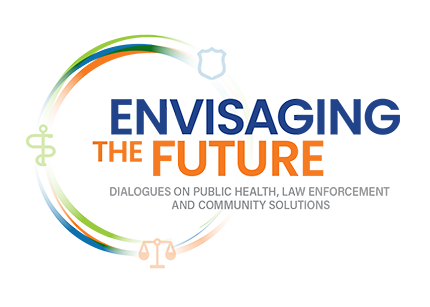
By Melissa Jardine, PhD, GLEPHA Fellow
Cyber-attacks on health information technology infrastructure, and disinformation relating to public health emergencies, have gained prominence as growing harms in recent years. While these problems require significant attention, the mission of the Global Law Enforcement and Public Health Association is to prioritise the intersection of law enforcement and public health, especially at the point of ‘what’s happening on the ground’, maintaining a people-centered focus.
Cybercrime scholars have also sought to reorient attention away from the technology, towards a multi-sectoral perspective, including through initiating an annual international conference series on ‘Human Factors in Cybercrime’ in 2018, and associated multi-disciplinary research (See for example, ‘Cybercrime in Context: the human factor in victimization, offending and policing’).
A human-centered focus on cybercrime provides a lens through which to explore the specific health implications of cyber harm and criminality on the public’s health, complementing our understanding of the technology and infrastructure which enables it.
The World Health Organization (WHO) 1948 Charter defines health as ‘the complete physical, mental, and social well-being of the whole person, not merely the absence of disease or infirmity,’ and holds that ‘the enjoyment of the highest attainable standard of health is one of the fundamental rights of every human being without distinction of race, religion, political belief, economic or social condition’.
The health impacts of cybercrime have been highlighted by Lazarus et al (2022) through the application of a feminist perspective to the Tripartite Cybercrime Framework. By considering the motivations of people who engage in cyber criminality and the profile of their targets, three categories of crimes were identified:
● Socio-economic;
● Psychosocial; and,
● Geopolitical.
For the present purposes, my focus will be on psychosocial cybercrime, which is described as being primarily driven to cause distress or psychological harm, rather than having a primary objective relating to monetary (or political) gain. These crimes disproportionately affect women and girls and can include sexual-based image abuse, cyberstalking, online harassment and more.
The WHO has recognised violence against women – particularly intimate partner violence and sexual violence – as a major public health problem and a violation of women’s human rights. Generative AI is exacerbating and accelerating technology facilitated violence against women and girls. Generative AI facilitates crimes such as image-based abuse which have specifically gendered harms, particularly through the impacts of victimisation that arise due to gender norms and expectations, which is typically the harm known and intended by perpetrators.
Crucially, violence against women is preventable.
Preventing and responding to technology facilitated violence against women and gender-based violence requires a range of collective actions and institutional assemblages already found in good public health practice and public health policing approaches. These include:
● “Nothing about us, without us” – inclusion and meaningful participation: Women are a minority in both technology and policing professions, and are therefore often excluded from contributing to a ‘secure by design’ approach which could embed protections and prevent tech being used as pervasively to carry out gender-based violence. Positive actions to include women and other marginalised groups must be taken to ensure the cyber and safety ecosystem is fair and equitable.
● Investing in institutional structures and coordinating mechanisms to empower women and prevent crime: Ensure funded positions are available and accessible to women to contribute to diplomacy, policy, law, tech, academia, policing, prosecutions and civil society organisations in preventing and responding to tech/cyber-facilitated violence against women, LGBTQ people and other marginalised groups. Establish focal points and work units to prevent and respond to cybercrime, especially psychosocial cybercrimes, with multi-disciplinary expertise. Crucially, investing in preventing cybercrime reduces the demand for investigation and prosecution where law enforcement agencies have finite resources.
● Improve frontline capacity of first responders to secure digital evidence: Police, civil society organisations and women’s support/service providers require access to training and skills to efficiently secure digital evidence to facilitate appropriate investigations. Trauma-informed approaches to respond to reporting people with dignity, care and not engaging in victim-blaming is also crucial for this process. Therefore, there is a need for frontline actors to have both digital literacy to secure digital evidence and essential communication skills for engaging with victim-survivors.
Preventing and punishing psychosocial cybercrimes, or those that intend to cause psychological harm or distress, are also important for ensuring women and marginalised people can equally participate in public political discussions and civic life. A study by the Economic Intelligence Unit (EIC) found that young women experienced high levels of online violence and that women constrained their participation in online discussions due to concerns about a lack of online safety. Consequently, women and girls experience the internet as a ‘double-edged sword’ which brings both opportunities and increased exposure to psychological harm and distress.
The principles of the WHO include that the ‘health of all peoples is fundamental to the attainment of peace and security and is dependent on the fullest co-operation of individuals and States’. The disproportionate negative psychological and psychosocial harms to women, girls and minorities requires particular attention at the intersection of law enforcement and public health. In particular, attention must be paid to how upstream interventions into tech design, marketing, and accessibility can influence the health impacts for people at the everyday level.
Prevention of cybercrime must be a priority, and crucially, protections for political participation, civic engagement and access to justice are all necessary for building healthy and fair societies. This can only be achieved by multi-sectoral cooperation such as that which underpins the mission of the Global Law Enforcement and Public Health Association.






